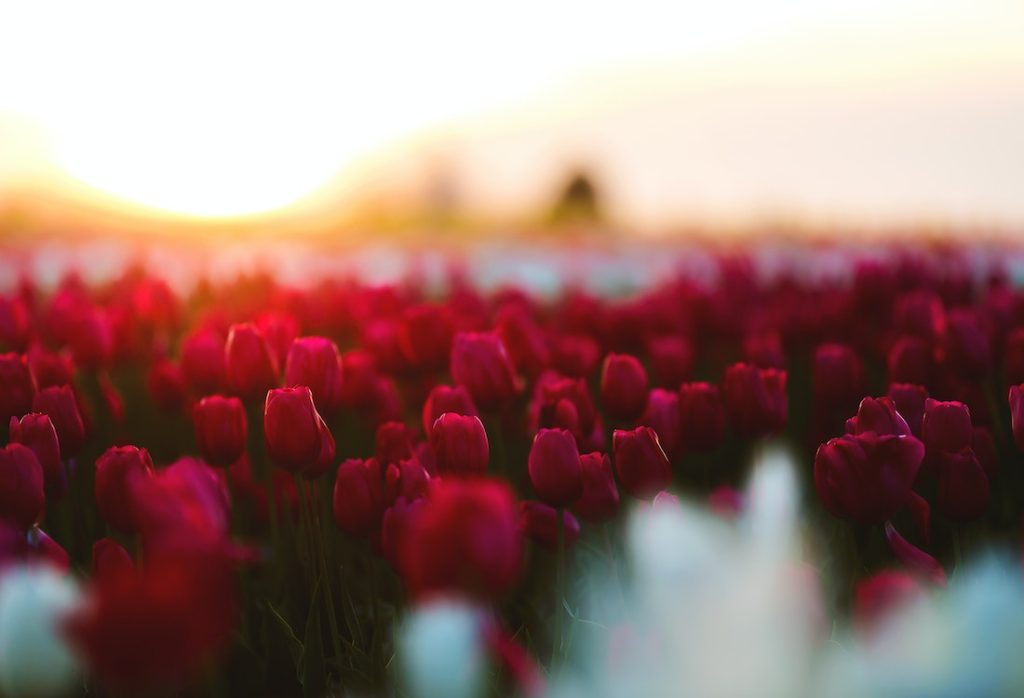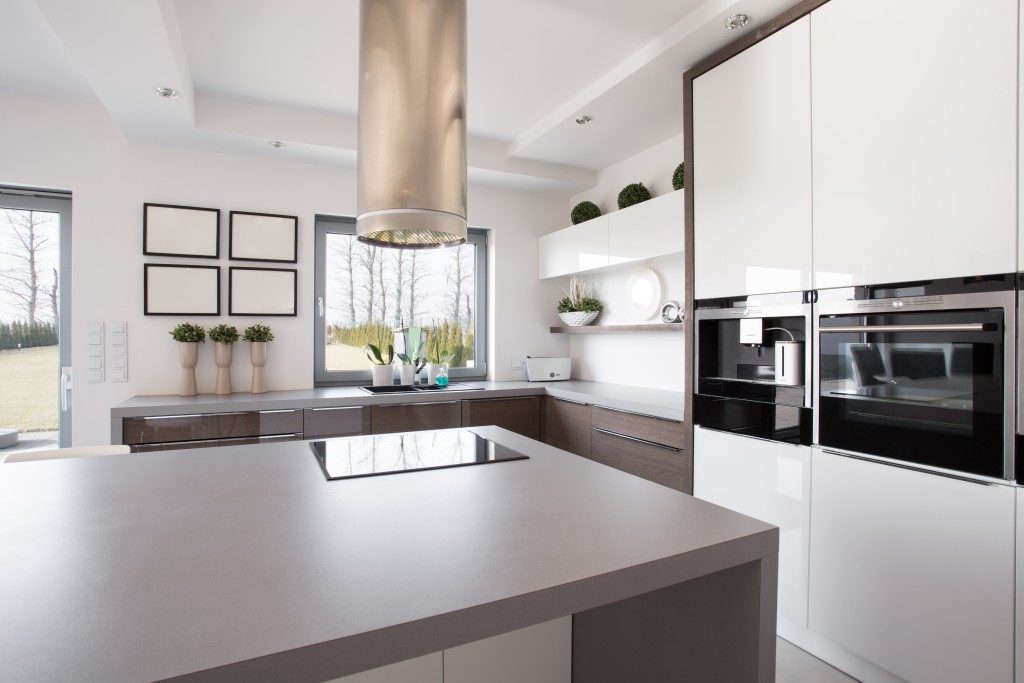- Depending on your preferences, you can select between potted or bare-root roses as plant options.
- The most famous rose bush types are old, hybrid, and wild.
- Hundreds of rose varieties have different characteristics – some low-maintenance, some resistant to diseases, etc.
- The key rose garden tips and precautions are to water roses frequently and do pest control.
- Caring for a rose garden starts with pruning and feeding the rose.
Beautiful and fragrant, each of the rose colors symbolizes something different. Red roses are for love and passion, orange roses bring joy, white roses symbolize purity and loyalty, and pink roses represent elegance and sweetness.
If you’d like to beautify your backyard with all the colors of roses, you should consider growing a rose garden. The US national flower is the perfect air freshener and biodiversity booster. And since they’re fairly easy to maintain, you’ll only need our handy guide to get started.
Read up, and we’ll teach you how to plant and grow fine rose bushes. The only remaining thing is to choose your colors or mix and match. Let’s start!

How to Grow a Rose Garden
To take things from the top, or in this case, from the bottom, to grow a nice rose garden, we begin at the roots. There are two types of roses you can go for: potted or bare-root roses.
Potted Rose Characteristics
The potted roses are roses grown in a container. They might already show leaves, buds, and blooms. These are suitable for newcomer gardeners, as they are simple to plant and grow.
You can plant them whenever is convenient, but the best time is by late spring, ideally on a cloudy and slightly cool day. In the growing season, you can find them in local shops.
When planting potted roses, gently shake the soil from the roots before re-planing in the ground. Make a planting hole around 16 to 18 inches wide. Also, add organic compost or manure to grow healthy roses. When you finish planting the roses, soak the ground with water, and tap around the loose soil to secure the plant.
Bare-root Rose Characteristics
Bare-root roses are soil-less plants. Before planting, the bare roots must be soaked in water for at least half a day. It’s best to plant them over 48 hours.
If you go for this option, you get a vast selection of varieties of roses to choose from. In addition, you can order them online for great prices.
Can You Plant Just Any Rose Variety?
Now that you know the groundwork to plant roses, let’s discuss choosing between rose varieties.
You should know that picking out the right rose variety is more challenging than it sounds. Sure, you can go for the prettiest roses, but that’s barely scratching the surface. After all, there are as many rose shapes and colors as you can imagine, all requiring unique upkeep.
Not all rose varieties require the same maintenance level or are disease resistant. Some rose types have rich fragrances, some re-bloom during summer, and some bloom only once. Also, take into account the suitable climate for the particular rose variety.
Make sure to adapt your choice to your rose garden needs and personal preferences. Do you have time for high-maintenance roses? Do you live in a warmer or a cooler region? Once you answer all these questions, you’ll determine the rose perfect for you:
- Old roses or heirloom roses have been around even before 1867. The old roses are luscious and fragrant and can be found in hundreds of varieties. Some are more suitable for warmer places, and some for milder climates.
- Hybrid roses appeared after 1867 and are more resistant and have long-lasting blooms. The most popular and modern hybrid garden roses have one big flower per stem.
- Wild roses will be perfect if you’re looking for a resistant root system that can withstand harsh weather conditions. Wild roses typically have thorny single-flower stems and bloom from late spring to summer.
Rose Garden Tips and Precautions
The next steps are finding a suitable planting site, choosing the right season, and planting properly. Let’s look at some tips on caring for your new roses:
Rose Watering

The proper way to water your rose garden is to water the soil instead of the leaves. Roses require frequent and generous watering twice a week during summertime. During fall, you can use less water. It’s key to adapt your watering practices toward season and temperature.
Be careful not to overwater the plant, as roses may like water but don’t like drowning in it. This will damage the roots, so it’s a good idea to implement a draining system to prevent the soaking of the plant. Roses like nutritious, loose, and moist soil.
Pest Control
Roses are very attractive to people, but insects-pests like them as well. Many diseases and pests can attack your rose bushes, so pay attention to your rose garden.
Use a gardening solution or pesticides to control pests. This is very much dependent on personal inclination. Even if you decide to keep your rose garden 100% natural, be aware of these potential issues and frequently check up on your plants.
Sunlight

All plants need sunlight to grow and flourish. The pot should be exposed to the sun for 8 hours a day. That will encourage photosynthesis and will make for flower bloom.
Harvesting
The rose needs from 6 to 8 weeks to flower. It’s best to harvest the rose flowers right after bloom, once fully unfolded. It’s usually the end of spring or the beginning of summer.
Pruning
Some rose types don’t need pruning, but the plant will be more lush and healthy if it’s pruned in early spring. In addition, the rose garden can be pruned seasonally to remove dead canes and shape to preference.
Rose Feeding
You must amp up your game and fertilize your rose bushes if you’d like show-stopper roses. Lack of nutrients such as nitrogen, potassium, and phosphorus can provoke problems with the rose plant.
Nitrogen promotes leaf growth, phosphorus boosts the plant’s strength, and potassium improves overall health. That is why the plants must be fertilized. If you go for healthier organic fertilizers, you can use compost, organic manure, or natural fertilizers. They are efficient and give the soil the proper pH value while boosting its microbes. However, they are a bit slower than artificial/regular fertilizers. Some gardeners even DIY their fertilizer; for example, coffee grounds and banana peel can be used for this purpose.
Rose Garden Care: Extra Tips
We’ve gone over the nitty-gritty regarding tea rose care. Here are some additional tips to keep in mind:
- When it’s really hot and humid, roses can struggle. So, keep an eye on them at all times. If it’s very humid, they might need less water.
- Add water if you notice the soil around your roses is dry.
- Warmer temperatures can harm your roses’ blooms and lure in pests.
- Wear protective gloves when pruning your rose garden – those pricks are sharp!
- Plant them next to aromatic plants and herbs.
Conclusion
We’ve all seen a nice rose garden blooming in different colors, shapes, and sizes. It’s a dream! And it’s not that hard to make this dream come true. Choose the right rose variety, select a proper spot in your garden, and with the few tips we shared, you can become an expert rose, gardener.
Remember to choose a tea rose garden variety according to your environmental conditions and personal preferences. While you may think that hybrid roses are beautiful, you may not be able to grow them in an environment prone to extreme weather – that’s what wild roses are for. Finally, water your roses regularly, keep them safe from pests, and fertilize them for the most beautiful and abundant rose garden!
Rose Garden FAQs
1) How often should I water the rose plants?
Stick to doing it twice or three times weekly in the summertime. Reduce the water amount in fall. Water the new plants more frequently.
2) When is the best time to harvest rose flowers?
Harvesting roses right after they fully unfold, typically in late spring or early summer, is best.
3) What fertilizers do a rose garden need to thrive quickly?
Similarly to other plants, roses usually need nitrogen, phosphorus, and potassium nutrients. In addition, a few elements like boron, chlorine, copper, and iron boosted growth.
4) What are the best companions for rose plants?
Roses complement well with aromatic plants and herbs like parsley and thyme.
5) Does a rose garden require less maintenance?
Most rose varieties are low-maintenance and require less upkeep than your traditional flower garden. However, not having a care routine and paying attention to the rose type’s needs will result in dead plants.



